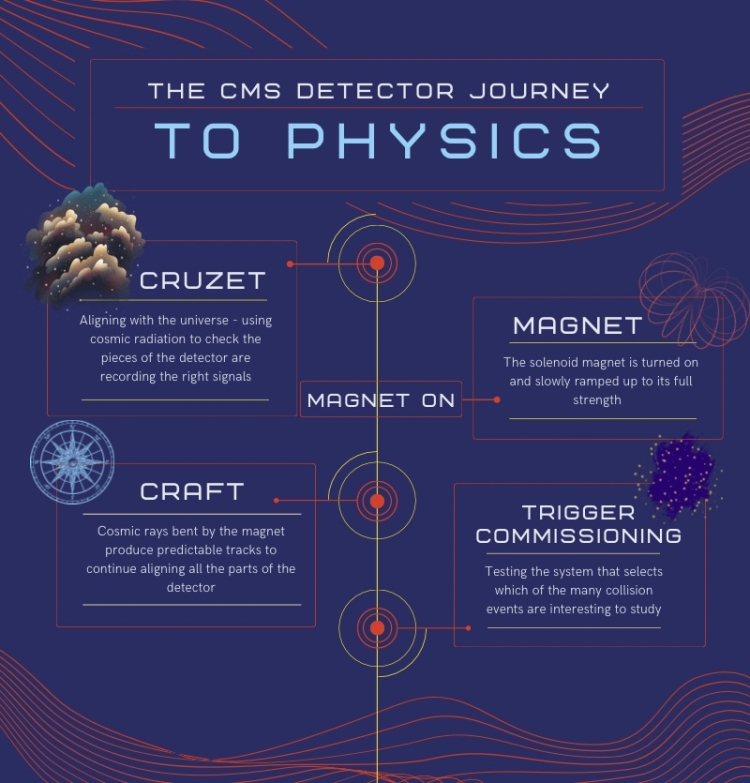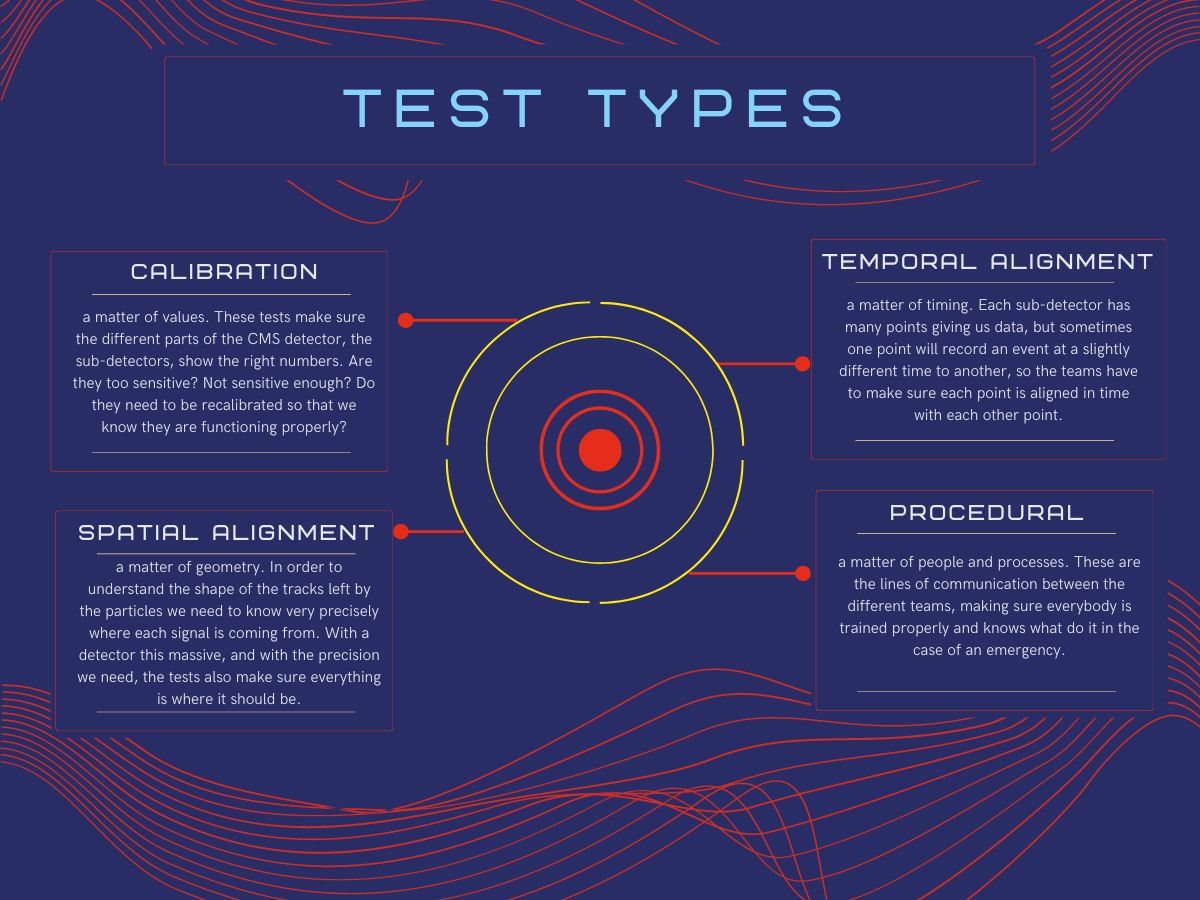
It is compelling to picture large physics labs with lots of sparks and heavy levers that wake up big, important experiments with sparks and loud bangs.
Even if this were the case, CMS is too big and too complex to be started up by a simple pull of a lever. Instead, the teams at the Large Hadron Collider (LHC) and at CMS need to slowly power everything up - and while doing that, test that everything is working exactly as expected. It is essential that each part of the detector, and every process going in or out of it, is calibrated, aligned, and practised. This way, the teams have access to the most precise and accurate data on which to continue their cutting-edge physics.
The time in which the LHC is operating is called a ‘Run’. Runs last a few years each, with pauses during some of the winter months, and ‘Shutdowns’ between Runs to upgrade functionality. During the Runs, groups of protons called bunches are accelerated around the LHC’s 27 km circumference, underground ring that crosses the Franco-Swiss border. The CMS detector is built around one of the points around the ring where the protons collide, and analyses the particles resulting from the collisions.
Run 3 started in July 2022, and the collisions have an energy of 13.6 TeV - an incredible amount of energy, equivalent to the heat about a billion times that of the core of the Sun! Then, during deep winter, CMS - and the LHC as a whole - has a Year End Technical Stop (YETS for short), where the protons whizzing around the collider stop. This allows for time for the detector to be checked over, any part changes or upgrades made, and all sorts of maintenance activities take place across its different parts.
This year, CMS continues Run 3 after the YETS.
So it is with the early spring, as the plants all come to life outside, that 100 metres underground the detector is also woken up. The teams work hard after the YETS to make sure everything is running in tip-top condition ready for the new data-taking period. Once the collisions properly start, the CMS detector needs to be in a position to record data from the collisions for physics analysis. During this preparation time they also take background data to compare to the physics data to eliminate ‘noise’ from the final results.
In this short series, we look at the different types of tests and steps needed for CMS to run at the precision the experiment requires. Find Part 2 here!

PART 1
CRUZET - Aligning with the Universe
Cosmic rays originating from the sun are made up mostly of protons and electrons. They hit our Earth’s atmosphere constantly, resulting in the production of fundamental particles such as muons.
These muons travel through the atmosphere and some even into the earth itself. The muons that reach the CMS detector, located 100 metres underground, can be seen by the detector itself! This is not surprising, as the M in CMS actually stands for ‘muon’, and the CMS detector is particularly good at picking up on muon signals. These ‘cosmic muons’ travel in straight lines as they do not interact with most things they encounter, and so when their paths through the detector are reconstructed, we expect to see that same straight line.
If the detector is not showing a straight line, then the information the system records from a particular piece of the detector is incorrect! In other words, that sub-detector is not aligned in space and should be realigned, ready for data taking.
It’s important to align the detector with the universe in this way after every time it is opened as parts may have shifted ever so slightly and they must be precisely in the right place!
The solenoid magnet is turned on and slowly ramped up to its full strength.
CRAFT - Cosmic Run at Almost Four Tesla
The magnet is turned on and we continue to take cosmic data! Due to the CRUZET, parts of the detector have been aligned as much as possible with the muons travelling in straight lines. However, now the magnetic field bends those muons as they pass through the detector. By knowing the strength of the magnetic field, the way the muons should bend is known and calculated. Therefore, the same principles apply for CRAFT as for CRUZET: to make sure the detector gives the correct readings by comparing them to the known tracks of the cosmic radiation.
Trigger Commissioning
During the Run, particle bunches collide up to 40 million times a second, which is an incredible amount of data! Therefore the trigger system is an essential part of the detector: it only saves particle signatures interesting for the experiment. This allows something in the order of 100 collisions per second, an amount far more manageable and relevant for analysis. It is essential that this be tested and checked as the LHC starts back up after winter, well before CMS starts taking data.

